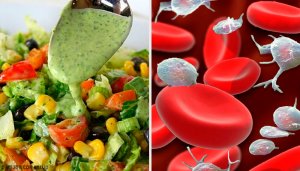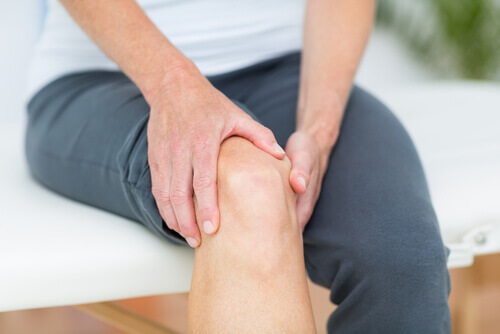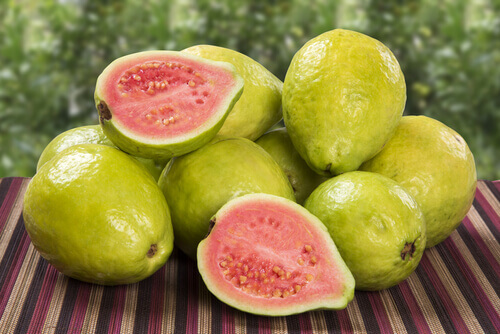What to Do if You Have a Low Platelet Count

A low platelet count is something that might make you worry. You might have a tendency to think that there is something wrong with your body.
However, don’t be alarmed. The body recognizes when its level of platelets is low, and it tries to respond quickly.
In this article, we’ll provide some information about what you should do if you have a low platelet count.
What are platelets?
Platelets are cells that make up part of the blood and play a part in coagulation. Because of this, it’s important to establish why your platelet count is outside of the normal range. The normal range is between 150,000 and 450,000 per cubic millimeter.
Some viral infections, such as Dengue, Chikungunya, or AIDS, could be responsible for altering your platelet count.
Although certain hepatic conditions such as cirrhosis (as this study by the National Institute of Medical Sciences and Nutrition Salvador Zubirán of Mexico states) can cause it, the lack of vitamin B12 and the use of some drugs can also affect the normal parameters of platelets.
Signs that you have a low platelet count
Determining that there is a change in your platelet count is something only a doctor can do. However, the body can give some warning signs that can help you to tell early on.
Unusual tiredness

According to this information from Mayo Clinic, one of the first signs that you have a low platelet count is feeling very tired without an obvious reason.
Worse, you feel tired every day and all-day long. This, in turn, may also affect your appetite.
Rashes and bruises
As confirmed by this information from the National Medicine Library of the United States, the next sign that you might have a low platelet count is the appearance of skin rashes. These tend to be found on your back, torso, and arms.
You can distinguish them easily for their round shape and reddish-purple color.
When your platelet count is outside of the normal range, bruises can appear easily even if you haven’t suffered a blow.
Muscle Pain

Another indicator that can come with a low platelet count is sharp muscle pain and difficulty moving.
This tends to be accompanied by tiredness and weakness in general.
What should you do if you have a low platelet count?
If you’re suffering from the symptoms above, you should go to see a specialist who will be able to perform the necessary tests. Once it’s been established that you have a low platelet count and your doctor has given you instructions, the next best thing you can do is adopt a healthy diet.
Eat foods rich in iron, as this study from the National Pediatrics Institute in Mexico confirms. Such foods will be spinach, lentils, liver, mussels, cranberries, blackberries, and bean sprouts.
Also include foods such as red pepper, grapefruit, oranges, strawberries, and coconut water, which are important sources of vitamins A, B, C, D, and K.
Recipes for restoring your platelet count
Below, we’ll take a look at some recipes that work to boost the absorption of nutrients that help your platelet count.
Iron-rich smoothie

- 5 mature guavas (450 g). According to this study from the National University of Colombia, it is a fruit that is very rich in iron.
- 1 red pepper (200 g)
- 1 cup of mineral water or boiled water (250 ml)
Preparation
- Wash the guavas and pepper.
- Chop the guavas into medium size pieces without peeling them.
- Chop the pepper and discard the seeds.
- Add them all together in a blender and add water. Liquidize well.
- Finally, sieve it and serve it.
Drink a glass of this drink in the morning, one in the evening, and again at night.
Nutrient-rich salad

Ingredients
- 1 carrot (300 g)
- 1 beetroot (300 g)
- 8 stalks of broccoli (400 g)
- 1 red pepper (200 g)
- 2 bunches of spinach (120 g)
- 2 bunches of watercress (120 g)
- 1 clove of garlic, crushed (5 g)
- 1 tbsp. of whole or crushed nuts (100 g)
- Lemon juice (50 ml)
- 2 tbsps. of olive oil (30 ml)
- A pinch of salt (10 g)
Preparation
- Clean all the vegetables well.
- Peel the beetroot and carrot and chop into medium-sized pieces.
- Put them in a pan of boiling water, along with the broccoli and boil for 5 minutes (this is to preserve their vitamins and proteins).
- Drain off the water and submerge the vegetables in cold water.
- Chop the beetroot and carrot into smaller pieces and put them in a bowl.
- Cut the pepper into strips and add to the beetroot and carrot.
- Roughly chop the spinach and watercress and add them to the bowl.
- Add the rest of the ingredients: lemon juice, crushed garlic, olive oil, nuts, and salt to taste.
- Mix together and serve.
It’s very important that you don’t medicate yourself. Doctors will prescribe you with proper treatment. Some doctors recommend that you complement your medication with some home remedies for a low platelet count.
Eating food that increase your intake of iron, vitamins, and other nutrients is ideal. As well as being part of a balanced diet, it’s also great for preventing and curing a wide variety of illnesses.
Despite that, don’t hesitate in consulting with your doctor if you experience any of the symptoms we’ve mentioned. They will help you to treat it effectively.
All cited sources were thoroughly reviewed by our team to ensure their quality, reliability, currency, and validity. The bibliography of this article was considered reliable and of academic or scientific accuracy.
- Healthline.com How to Naturally Increase Your Platelet Count [Online] Available at: www.healthline.com/health/how-to-increase-platelet-count
- Díaz P, Nava A y Álvarez R. Evaluación del contenido de hierro en la guayaba (Psidium guajava) y pimentón (Capsicum annum L) y su impacto como complemento en la dieta. Rev. Fac. Cienc. 2017;6(2):73-86
This text is provided for informational purposes only and does not replace consultation with a professional. If in doubt, consult your specialist.








